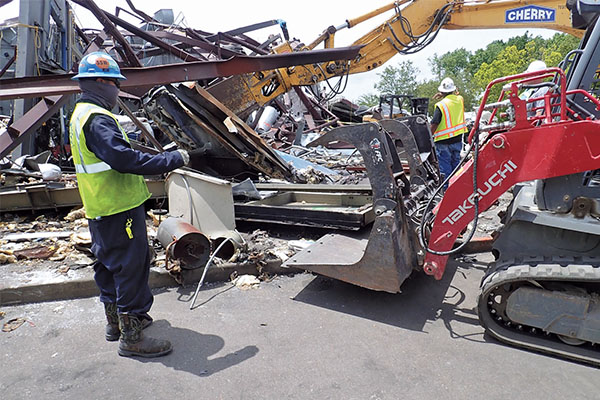Reevaluate your business practices to find solutions
The development of vaccines for COVID-19 is incredibly good news. It will take time to ramp up production, but this signals light at the end of the tunnel that allows us to focus on better days ahead.

Livestreaming can be used to ensure a socially distanced scene exam. Photo by Sean Crawley/Safety Engineering Labs
The pandemic has created incredible challenges for society. And each sector of society has had to rethink how it conducts “business as usual.” The field of fire scene examination is no different. Despite the optimistic horizon, the manner in which we do business will likely be forever altered to some degree.
Scene exams traditionally involve dozens of individuals descending on a scene and working in close proximity to one another as they document the scene and test various gas systems, regulators and function of appliances in the case of gas explosions. But sometimes the group is much larger.
I recently ran a scene exam that included more than 200 participants in an examination of an explosion in Texas. Keeping that many people socially distanced was a major obstacle that needed to be resolved. At the time of the investigation in May, Houston had strict rules about limiting social gatherings. Having 200 attendees at the scene was well above acceptable limits.
To overcome this limitation and facilitate a scene exam before weather took its toll on the scene, we devised the use of livestreaming. We limited each participant to a single attendee, and we provided access to the livestream in real time to all those not allowed on-site. This solution to our obstacle served us well. The attendees were all able to socially distance, wore masks and completed the scene exam in a safe and orderly way.
The court where the various lawsuits were pending issued an order that designated those attending the scene as “essential workers.” With this order in hand, attendees could travel to and from the scene exam to conduct their business. Instead of having every investigator take separate photos, create separate diagrams and photograph every test and artifact, we designated a “common scribe” whose job it was to do all of this work objectively.
The lead investigator on my team would review the common scribe notes each evening and then post them to a common link to which all interested parties had access. Each morning, the common scribe notes would be discussed in the group meeting that initiated each day’s work. If there were any conflicts on the accuracy of the common scribe notes, they would be resolved by consensus. There were only minor issues throughout the three-plus weeks of the scene exam.
This experience of using livestreaming and a common scribe to limit the number of attendees has been replicated several times by my team since the Houston examination. It allows the client, the lawyer, the insurance representative and others with interest to see what is happening at the scene without requiring everyone to travel. For those of us who travel for a living, we know that travel in the pandemic is much more difficult. There are fewer flights available, and the restrictions at end locations are also more difficult to manage.
From my experience learning to adapt to the new normal, I have come to realize that the pandemic has forced us to reevaluate how we do business. We can learn from this very difficult and unique experience and still find a way to get the job done.
As John Lennon wrote: “There are no problems, only solutions.”
May you always seek solutions.
John V. McCoy is with McCoy, Leavitt, Laskey LLC. His firm represents industry members nationally. He can be reached at 262-522-7007.
















